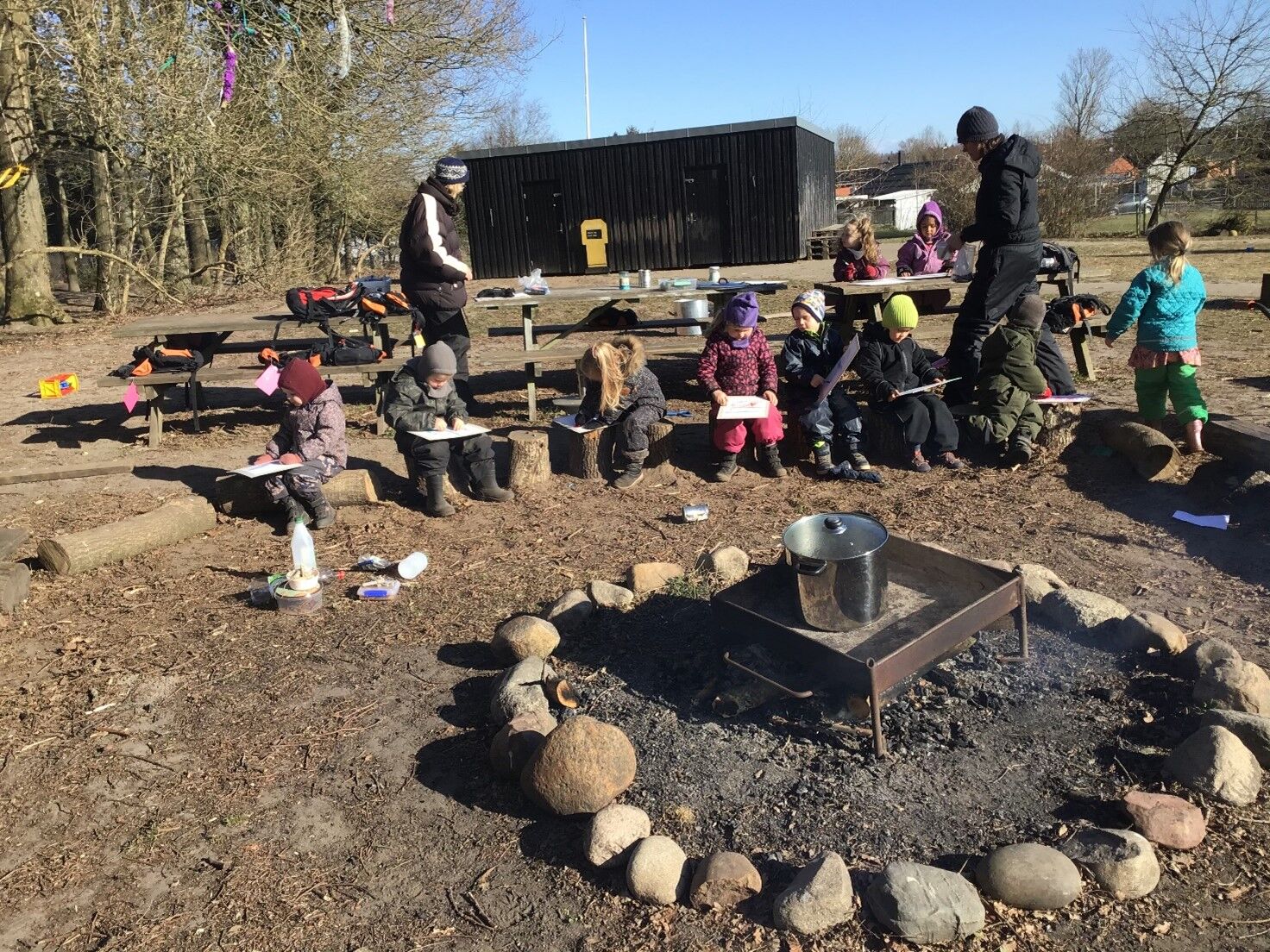PLAY, EDUCATION, AESTHETIC PROCESSES, ART, CULTURE, VISUAL ARTS
REGION: Central Jutland
MUNICIPALITY: Viborg
PROCEDURE: 2022
DAILY OFFER: Children's houses in Stoholm
Snow story: Børnehusene i Stoholm (2022)
How has it gone in relation to the overall wonder?
"How do we create stimulating learning environments for children's aesthetic learning processes and what does it take to support these processes in outdoor spaces?"
Out of our wonder, we embarked on an action learning program with a group of children and an artist.
We are two children's houses on two sites and have decided that a small group of children from both houses and an educator from each house will participate in the program together.
Through the activities, the pedagogical staff has gained the courage to jump into the activities and 'be' in the processes, without a definitive goal. They have gained more courage to let go of being in control (taking the lead) in the activity and instead follow children's curiosity and wonder (alongside and behind).
The pedagogical staff has gained positive experience with what can happen when you let go of control and instead experiment WITH the children (walking alongside). The staff is aware of not putting the brakes on children's ideas. So instead of perhaps saying no to children's suggestions and leading children in the direction of an already finalized end product that the adults had planned, the staff stop and think, "what would Jane (the artist) do?". Their practice has shifted to always saying, "yes, that's a good idea!" and then experimenting together.
Through a theoretical starting point in 'aesthetic activity', we have observed and analyzed children in practice. We have gained new knowledge and new perspectives on children's aesthetic and artistic processes.
By having an artist involved in the process and participating in the artistic workshop, we have acquired new skills/techniques to support children's development through visual arts. We have also taken a new approach to children's art processes. Among other things, we have abolished copy drawings and instead we give 'gifts' to children's drawings (adults drawing 1-3 basic shapes on paper) if they need scaffolding in drawing processes.
We have gained knowledge and experience of what inhibits and promotes children's desire, motivation, self-esteem, etc. through children's visual arts.
We also see new play relationships sprouting and have realized that it is an opportunity for early relationship building across the groups, across the houses, which can have a positive impact on our work around 'the good transition to kindergarten'. The current LegeKunst group are children who start in the oldest groups after the summer vacation and in the spring they gather across our houses and do activities together with the aim of creating good relationships that can support child communities before school starts and the good transition to school.
Children take the experiences home and continue PlayArt at home (e.g. hammering flowers).
We experience an enthusiastic and highly motivated staff group. Through systematic reflection, staff are able to see their own practice and children's development. This gives an extra boost to the staff's self-esteem and confidence. We also find that staff infect each other with energy and inspire each other.
Staff argue based on professional knowledge and systematic reflection.
We find that the children take techniques, concepts and stories from PlayArt into their play afterwards. For example, they 'mix colors' in the mud kitchen and paint with leaves and flowers on the tiles.
The local curriculum
"We are therefore constantly working on how practice can be framed, organized and planned so that children have the best conditions for learning and development. With us, children's learning and development is an alternation between child-initiated play, adult-planned activities and routine situations, as well as in all the other situations of shorter or longer duration that spontaneously arise during the day. In order to identify what learning is taking place, it is important that we continuously focus on and evaluate the intended, realized, informal and formal learning based on Viborg Municipality's "A common basis for children's learning".
Through PlayArt activities, we work within our local pedagogical goals and curriculum in several areas, such as the child's versatile personal development, social development, language development (before language), physical and sensory development, nature and aesthetic development.
Through the systematic reflection, it has been possible to see what learning has taken place, and provided the opportunity to see what adjustments have been needed in the learning environment so that all children have had the opportunity to participate.
What's next? What are we still curious about?
We will continue to work across staff and child groups. We have created an 'artist group' across the staff group.
We want to bring more action learning into our work. Jump into investigations and experiments with the children. We also want to be more aware of children's curiosity and wonder.
We have experienced a positive effect and high quality in the pedagogical work by having a clear framework and division of roles in the LegeKunst project. Therefore, we will be more curious about how roles and organization in our everyday life can create space for even more immersion for children and not least adults.
Children's groups across the houses for the 4-year-olds create a new wonder, next spring, these children will meet across the houses in the context of the activities we do for the older group.
click on the picture to see a larger version


